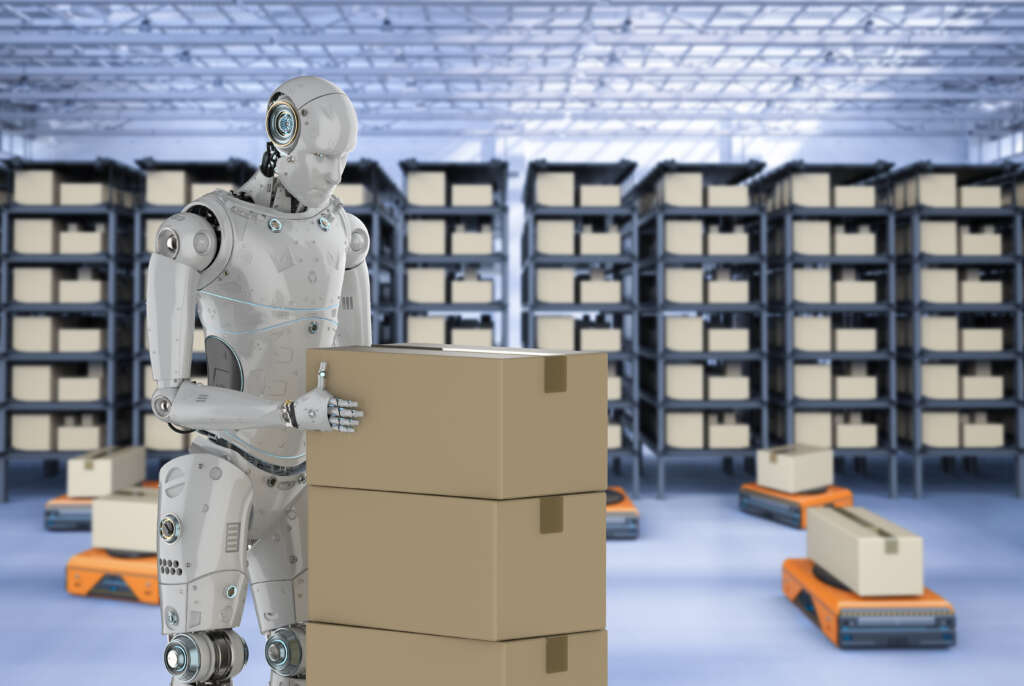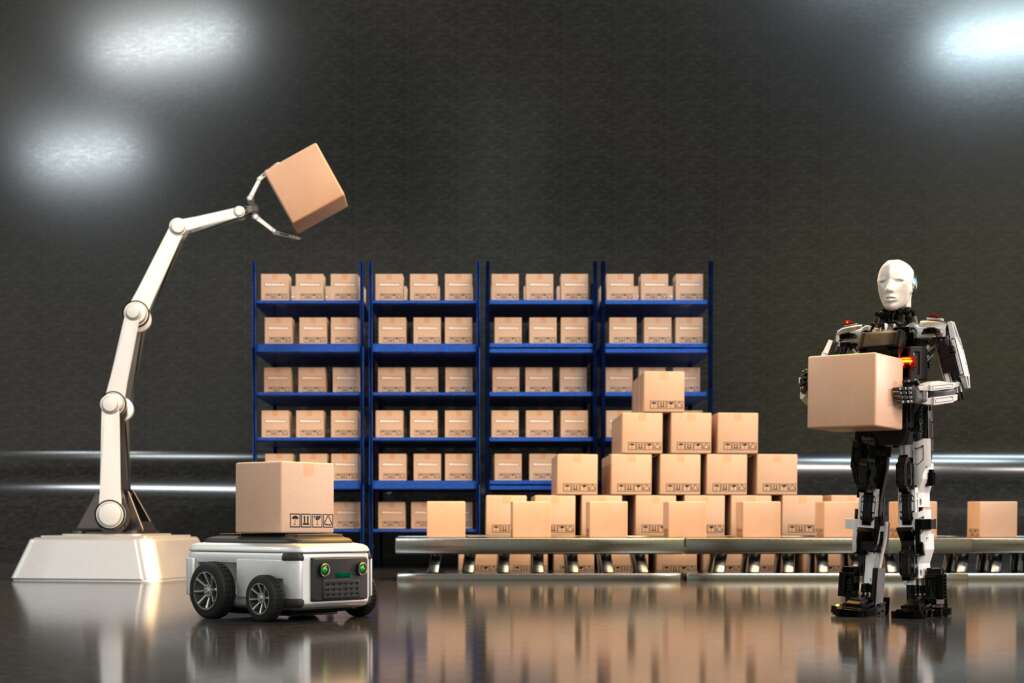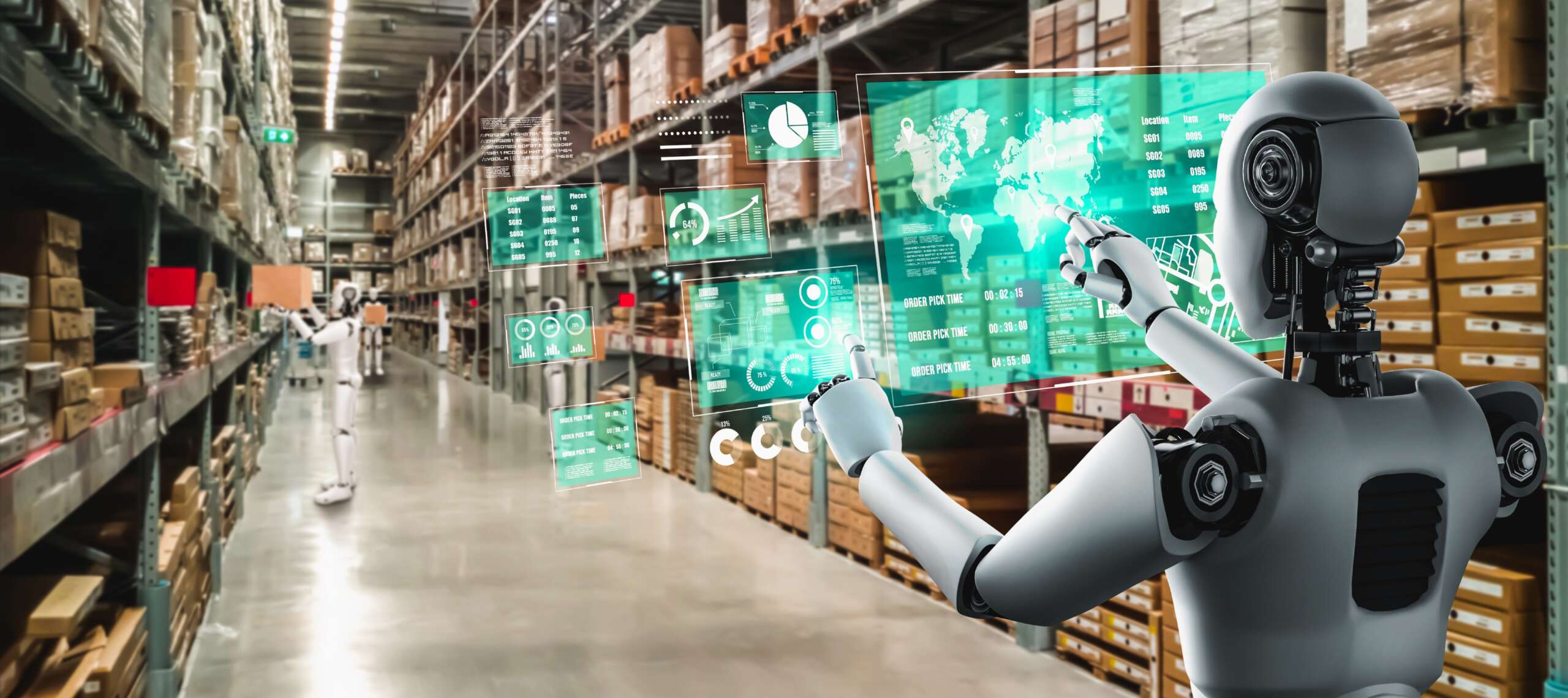Imagine if an intelligent algorithm could predict the future and make your supply chain run smoother. The White House Council on Supply Chain Resilience is working hard to fix supply chain problems. Could AI be leading us to a supply chain revolution?
President Biden has made a big move by getting $52.7 billion from Congress for technology and supply chain management. This shows a big shift towards using AI in supply chains. It could change how we handle disruptions and grow the economy.
But how big is the role of AI in supply chains? Early users of AI in logistics are seeing big wins. They’ve cut logistics costs by 15%, improved inventory by 35%, and boosted service levels by 65%.
Even so, many companies don’t know much about their supply chains. Could AI be the solution? It uses real-time data to improve demand forecasts and adapt to market changes. AI is making supply chain optimization a reality today, changing how businesses work.
The EU’s AI Act sets rules for high-risk AI systems. This could lead to a global effort to use AI in supply chains responsibly. As we explore AI’s impact, it’s clear we’re on the edge of a new era. Strategic partnerships and innovative policies are key to a strong, AI-powered global supply network.
Understanding AI’s Role in Enhancing Supply Chain Resilience
In today’s complex global market, using AI for supply chain management is essential for companies to succeed. AI can handle huge amounts of data, changing how businesses manage stock, predict demand, and handle problems. For example, companies using AI have seen a 15% drop in logistics costs, showing AI’s big impact in reducing supply chain costs with AI.

Companies like Amazon have added almost 200,000 robots to their warehouses with AI. This has greatly improved their operations and set a new standard in enhancing the supply chain with AI. These robots don’t just replace people; they make things more precise, fast, and efficient. This helps make the supply chain more resilient.
AI does more than just automate. It helps companies deal with disruptions, which is a big worry for 80% of supply chain leaders. AI uses real-time data to predict market changes and manage stock better. Now, 45% of businesses use machine learning for demand forecasting, and this number is expected to grow.
Reducing supply chain costs with AI also means better risk management and keeping an eye on price changes. This makes supply chains stronger. AI can predict and prevent risks, helping businesses stay flexible and ready for changes in the market. This ensures they keep optimizing their supply chains.
Adding AI to supply chain processes is key for companies that want to last and be strong. AI’s ability to see into the future and improve efficiency doesn’t just cut costs. It also makes supply chains more resilient worldwide.
Exploring Cost Savings and ROI of AI for Supply Chain Management
Using AI logistics solutions has changed how businesses predict demand and manage inventory. McKinsey’s 2022 survey found that early users cut logistics costs by up to 15% and improved inventory by 35%.

AI tools also boost service levels by 65%, showing a big return on investment (ROI). This has caught the eye of 70% of CEOs. AI helps make better decisions in production, inventory, and distribution planning.
The growth of supply chain optimization with AI is expected to increase spending on industrial IoT platforms. From $1.67 billion in 2018 to $12.44 billion by 2024, this shows a big push for technology in supply chain management.
AI not only makes operations more efficient but also helps with sustainability. It reduces waste and improves how we use resources. This leads to greener manufacturing and logistics, showing a big move towards sustainable practices.
Organizations using AI in supply chain do so for more than just efficiency. It’s part of a bigger move towards data-driven, responsive, and adaptable operations.
But, using AI in supply chain needs a big investment in training and upkeep. Despite these costs, the benefits of AI in supply chain keep making a strong case for its wider use.
AI in Supply Chain Efficiency: Optimizing Logistics and Operations
The growth of AI in logistics is changing how we manage supply chains. In 2022, the AI market in logistics was worth about $3,037.98 million. It’s expected to grow by 46.50% each year from 2023 to 2030, reaching $64,459.38 million by 2030. This shows how important AI is in making operations better and reducing supply chain costs with AI.
Companies like United States Cold Storage and DHL are using AI to improve. They use automated scheduling and self-driving forklifts, making things run smoother. UPS uses an AI chatbot to answer customer questions, making things more efficient. This shows how AI can help in many ways, from robots to talking to customers.
AI in supply chain efficiency is key for making big decisions. AI looks at lots of data to find the best routes, predict what customers will want, and manage stock. For example, it can predict what customers will buy, helping stores keep the right amount of stock. It also suggests better shipping routes, cutting down on delays and making deliveries faster.
AI is also being used for new tasks like helping with job interviews and mental health support. This shows AI’s role is growing beyond just logistics. Using AI makes things run smoother and helps with things like changing prices and predicting maintenance needs. These are key to staying competitive in today’s fast market.
Using AI in logistics makes things more efficient and helps businesses work better and cheaper. As AI keeps getting better, it will change the supply chain even more. It’s becoming a must-have for companies wanting to succeed online.
Enhancing Real-Time Decision-Making with AI’s Predictive Capabilities
Using AI-powered supply chain solutions has changed how we make decisions in real time. It has made operations more efficient and effective. Predictive analytics are key to these changes, giving insights that help make big decisions for the supply chain.

Big companies like UPS have seen huge improvements. They cut delivery times and saved over 10 million miles a year with AI. Maersk improved by 25% in 2020 by using AI in logistics and supply management. Coca-Cola boosted delivery efficiency by 15% during the COVID-19 pandemic with predictive analytics.
Walmart saved about $1.5 billion a year with an AI system for tracking inventory. This reduced too much inventory and made the supply chain better and cheaper. Unilever cut excess inventory by 30% and lowered warehouse costs a lot, showing how AI can save money in the supply chain.
These examples show how AI is great at making quick decisions. AI can look at a lot of data to predict trends in demand and supply. This helps businesses stay ahead by making decisions that match the market.
This method helps with operations and pushes businesses toward a future of data-driven decisions. It’s key for staying competitive in today’s business world.
Strategic Partnerships and Policies for Responsible AI Deployment
As technology changes fast, it’s vital to make strategic partnerships and policies for using AI responsibly. The talks between the Biden administration and the European Union show how working together helps manage risks in AI use. They aim to enhance supply chains with AI safely and ethically. The Responsible AI (RAI) Strategy offers detailed plans to keep up with changes and make sure AI in supply chains is trusted and ethical.
The way we see national security has changed a lot in the last ten years. AI is now key to innovation and security. The DoD’s AI Ethical Principles and IKEA’s ethics board show how companies are thinking ahead. They want to make sure AI is used right and follows the law.
Cloud AI solutions give strong support, but making sure AI is used correctly is urgent. This means looking at job changes and setting ethical rules in the supply chain. It’s important to handle these changes well and be open about how AI might change or create new jobs.
The steps in the Implementation Pathway show a full plan for using AI correctly. This includes governance, building trust, and making sure AI products are good. It also means creating a place for responsible AI and training workers for AI jobs. Without strong leadership and a plan for growing AI, efforts might fail. But, a culture that values learning and teamwork can help an organization become AI-ready. Sharing what works and learning from others can help use AI in supply chains better, speed up its use, and avoid problems. These partnerships and policies will make AI a key part of supply chain management, bringing new, ethical innovation.



